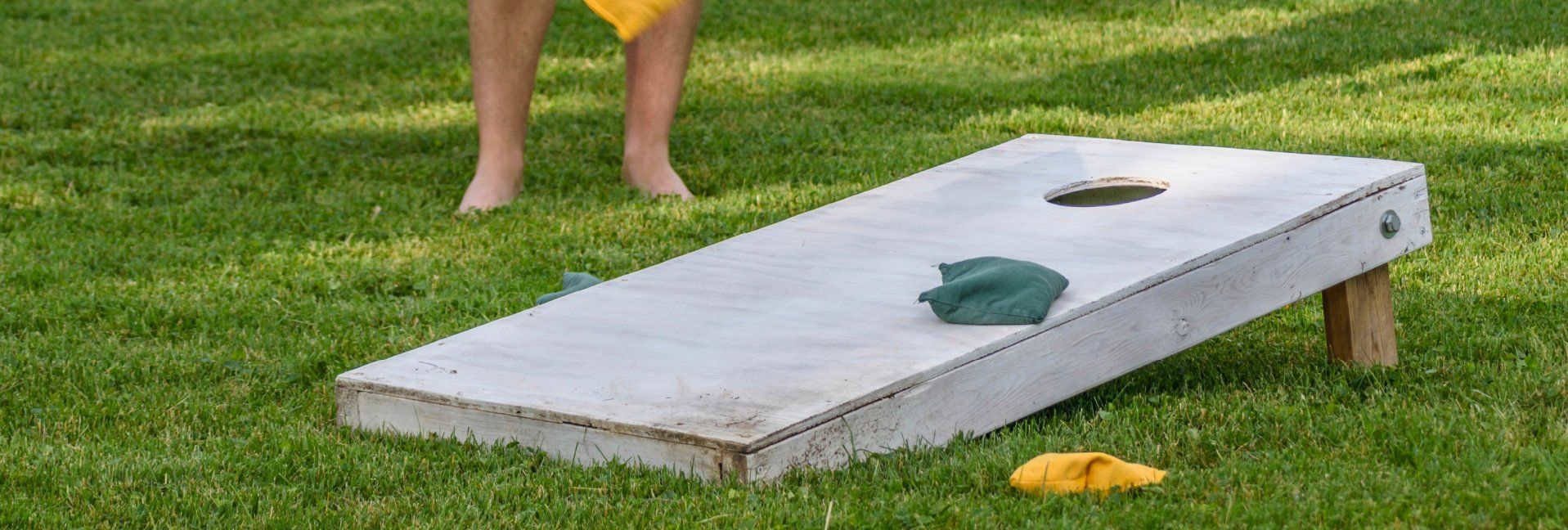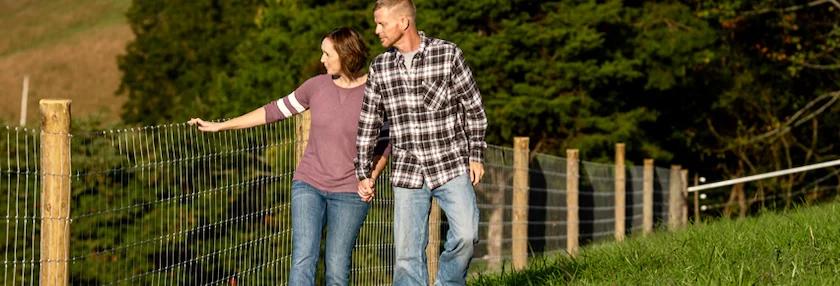Pitching to Win in the Front Yard


One thing about people who live in the country: We love to have fun, even it is relaxed fun.
Take horseshoes, for example. On the face of it, this must have developed back in the day when farmers relied on horse-and mule-power to get things done. All you need is a couple of metal stakes, disused horseshoes, and some distance between.
It turns out that horseshoes is a relatively recent evolution, and front-yard games continue to evolve with new additions. But when competition gets fierce, someone is asked to hold a competitor’s drink.
Let’s take a look at the possible evolution of pitching games.
Achilles, hold my wine
Discus
In all likelihood, most of the object-throwing games we enjoy today in our front yard originated as an ancient martial sport.
According to the National Horseshoe Pitching Association, the discus was a tapered, circular plate of metal (or stone!) Anywhere from eight to 12 inches in diameter and had a hole in the center. It was pitched for distance with a strap passed through the center hole and released. Just like the modern Olympic sport of discus throwing, the one that goes the farthest wins.
The Indian chakram was an actual war weapon of the same description but with a sharpened outer edge. Larger versions were deadly up to 100 yards.
At some point, accuracy entered the picture and Greek competitors began to pitch the discus toward an iron stake—or maybe a sword stuck into the ground—with the win going to whoever hit it.
The Olympic discus has no center hole, and the sport has very strict guidelines as far as diameter, weight and area from which it is thrown. Even in ancient days, though, your throw would be disqualified for stepping over the line.
Alistair, hold my mead
Quoits
The British game of quoits is undoubtedly a pub game, and like many games embraced by tipplers, has numerous versions. Each quoit is similar to a small (around 8-inch diameter) discus with a large center hole and today made of steel. You pitch a quoit toward a central stake or pin.
Consider the variations, the Long Game or Old Game of quoits: The pitch is 18 yards long with the Old game being fully 21 yards end-to-end. To make things challenging, the central pin is one inch in diameter, centrally located in a moist clay bed…but is flush with the surface!
Quoit is pronounced like “coit”
Two players throw their two quoits to the pit, and the one closest to the pin gets a point. A score of 21 wins the game.
The Northern game of quoits has a pitch of only 11 yards apart and each pit has a central post extending upwards two to three inches above the surface. The Northern game also has specific rules about the diameter and weight of each quoit, as well as depth of the quoit’s bowl shape.
Two points are scored for a ringer, unless your opponent covers your ringer, then he gets those points. Otherwise, each quoit is measured from the center of the pin and the closest gets one point.
There are still many quoit pitches to be found in the U.K., chiefly part of taverns in rural areas.
Here in America, the U.S. Quoiting Association (usqa.org) holds competitions in Pennsylvania. They have defined a quoit bed to be exactly 21 feet apart, center to center, with a pin extending four inches high. The quoit bed may be boxed in and filled with either clay or dirt.
A U.S. quoit weights four pounds and has either “he” or “she” sides; quoit that lands with its “mound” up is a “he” which one with the “bowl” up is a “she.”
“She” quoits have no value, but remain in play and can be flipped over to earn points. No one said the game is politically correct.
Elmer, hold my beer
Horseshoes
Who among us hasn’t tried their hand pitching horseshoes? It is a game that can be played alone or with friends for recreation. Like the other pitching games, it requires a minimum of parts—horseshoes and a steel rod in the ground.
Not surprisingly, the horseshoe pitch remains a common sight at county and small-town parks all over.
Recreationally, beer is often involved (but certainly not required) on languid summer days. And unlike some of the previous pitching games, it’s a not particularly strenuous sport, involving walking, bending, stretching and light lifting. If you can’t comfortably toss a shoe the regulation 37 feet, then step up to a horseshoe pit’s elder’s, women’s, or junior’s box, which is 10 feet closer.
What, you’ve never pitched? To an outsider, it looks easy, like bowling. You hold the 2-1/2-pound horseshoe in one hand, bring it back as you step forward, and release with a slight spin, throwing it flat. The horseshoe arcs through the air, but has to hit the 15-inch high stake with the open side to get a ringer.
Anything less than perfect release height, angle, speed and rotation and you’ll be out of luck. Maybe that’s why many pitchers try different styles until finding one that works most of the time.
You can find state, regional, or even a county horseshoe pitcher association to join and learn more. They hold competitions for men, women, elders (age 70+) and children. Even if you’re not a regular part of the horseshoe pitch scene, take a tour at the National Horseshoe Pitching Association Hall of Fame & Museum at Wentzville, Missouri.
Jaxson, hold my craft beer
Cornhole
There few games as indelicately named as cornhole, but the suggestive shading has been slowly eroding. Today, you can find men, women, kids—heck, anyone—tossing bean bags toward plywood targets at virtually any family gathering.
According to one (perhaps tongue-in-cheek) website, Cornhole’s origin began with a14th Century German cabinet maker. On the other hand, notes author Mark Rogers in his 2011 book [I]Cornhole: Throwing Bags in a Hole, it almost certainly originated in midwestern corn country, specifically Ohio and some say more specifically, Cincinnati.
Rogers writes “corn hole achieves its name, in large part, to the material used to stuff a traditional bag, corn kernels.”
‘(Bean bags) becomes very exciting at times. I saw the championship in Paris—many people were killed…’
~W.C. Fields, “Never Give A Sucker An Even Break” 1941
This pastime now can have a hard edge of competition. Today, we actually have competing authorities governing cornhole—the American Cornhole Association, the American Cornhole League, the World Cornhole Organization, and the American Cornhole Organization among them, plus numerous state, county, and local leagues and teams. Cornhole has even been featured on ESPN.
Anyone with a plywood board and a saw can create the target for practice. But in gaining serious players, standardization has taken place.
For example, the ACA has adopted the following equipment specifications and standards:
Each board shall be a 47.5 to 48 inch by 23.5 to 24 inch rectangle made of plywood at least a half-inch thick
The hole in the board shall be 6 inches in diameter with its center 9 inches from the top and 12 inches from each side of the board edges
• The front of the board shall be 3-4 inches from bottom to top
• The back of the board shall be approximately 12 inches from ground to the highest point of the deck
• The board finish shall be sanded to a very smooth texture, with no blemishes in the wood surface
• The board can be painted with a semi-gloss exterior latex paint resulting in a surface that allows bags to slide, but is not so slippery that it allows the bags to slide back down the board.
The bags require more detailed description:
The cornhole bags shall be made from two fabric squares 6.25 square inches with a 0.25 inch stitched seam on all four sides. Bags should be made from durable fabric. Each bag shall be filled with approximately 2 cups of feed corn and finished bags should be roughly 6 square inches and weigh 14-16 ounces. ACA will allow the use of plastic pellets (All Weather Cornhole Bags) in lieu of feed corn.
Perhaps not surprisingly, the ACA offers both Corn-Filled and All Weather cornhole bags for sale.
FOR MORE INFORMATION
www.playcornhole.org
www.americancornhole.com
www.iplaycornhole.com
Tags:Seasonal Living

Acreage Life is part of the Catalyst Communications Network publication family.














